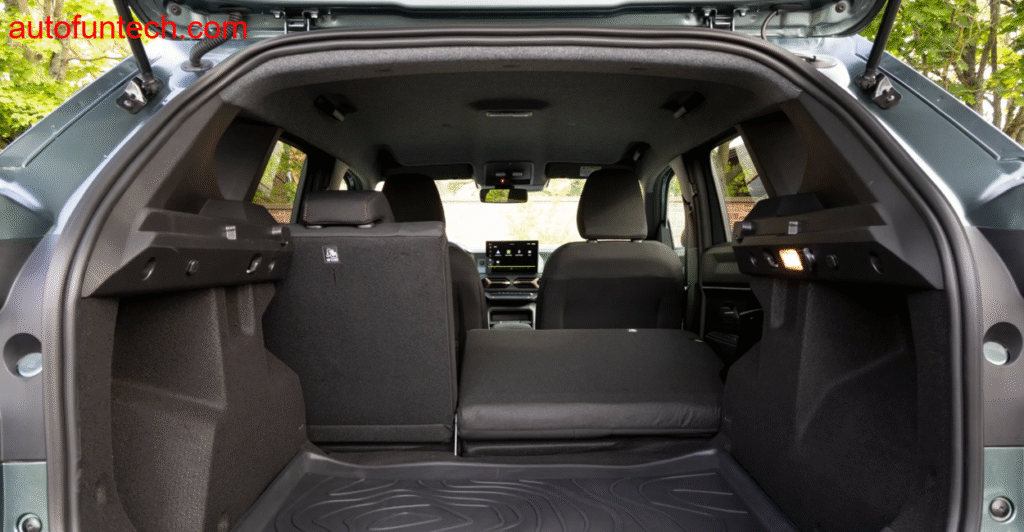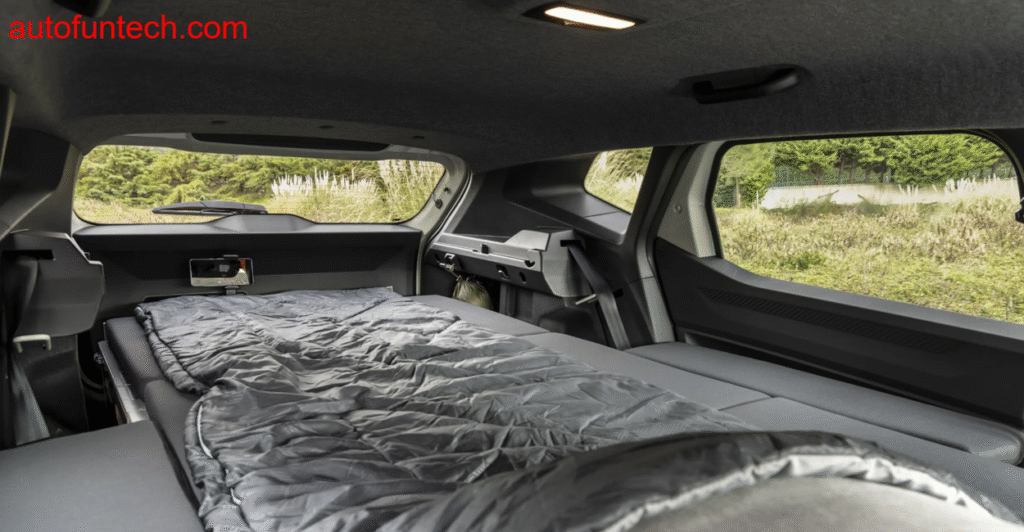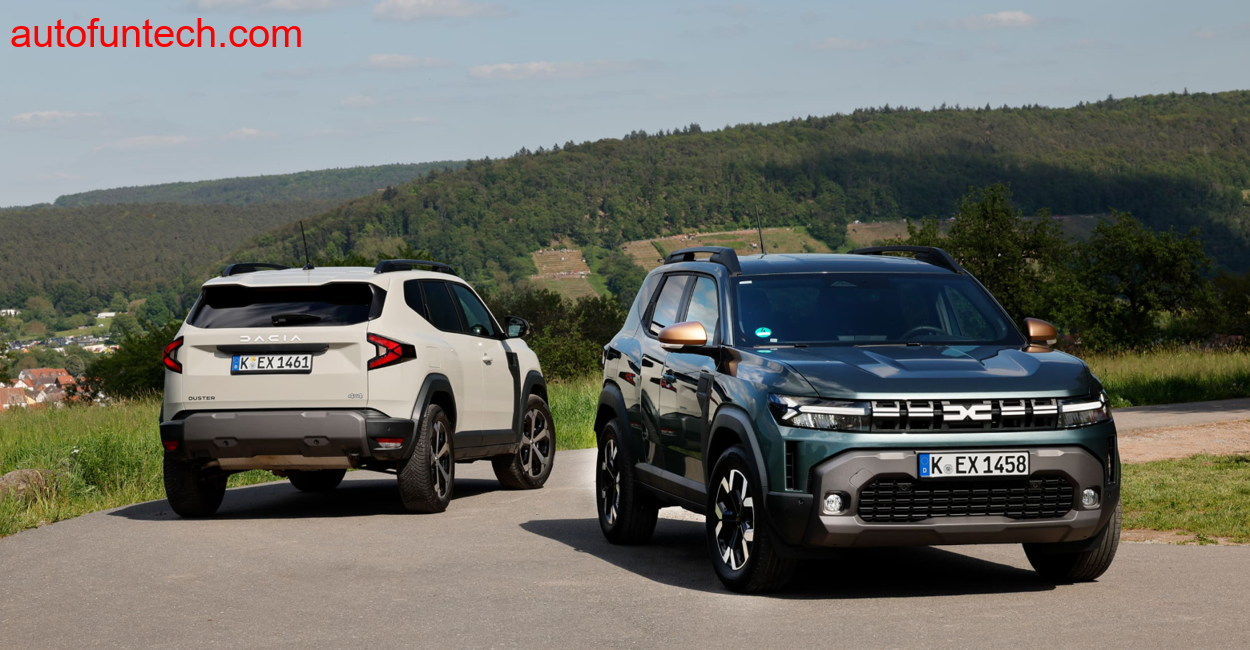The Location: Nebelhorn’s Quiet Ferocity
If you’ve never been, the Nebelhorn above Oberstdorf is where postcards come to life, until you drive it. The serpentine asphalt seems to float between clouds and cliffside, with hairpins tight enough to make any vehicle show its true nature. The temperature barely nudged above freezing when I set off, and last night’s flurry left parts of the road glossy with ice patches. Perfect, I thought. Let’s see what this hybrid Duster is really made of.
First Impressions: Not Your Grandpa’s Duster
I’ve driven the older Duster generations, and let’s just say they were honest cars, nothing more, nothing less. But this one? The visual upgrade is stark. The squared wheel arches, the crisp Y, shaped LED headlights, the chunkier front end, it all feels less like a bargain, bin SUV and more like a pared, down Volvo or a mini Land Rover.
The “Extreme” trim I had was draped in matte green with subtle copper accents. It looked muscular yet approachable. Slipping into the driver’s seat, I noticed the new 10.1, inch center display tilted slightly toward me. The cockpit layout is no longer a patchwork of budget, saving decisions; it feels designed. Soft, touch materials are limited, yes, but the textures and layout feel coherent, functional with just a hint of flair.
Tech Meets Terrain: How the Hybrid Performs
Let’s talk about the powertrain. The Duster Hybrid 140 combines a 1.6, liter naturally aspirated petrol engine with a 49, hp electric motor and a high, voltage starter, generator. On paper, it doesn’t scream performance, but I was surprised. Especially in urban areas or low, speed ascents, the EV, only mode kicks in more often than expected, making for a quiet, almost eerie glide.
Climbing toward the summit roads, I dipped into more aggressive throttle inputs. That’s where the combustion engine stepped up, powerfully, but not frantically. The seamless transition between electric and gas power is a testament to Renault’s experience (remember, this is based on the Clio hybrid tech). Still, the multi, mode automatic gearbox, an unsynchronized dog, clutch affair, occasionally hesitated, especially when I demanded sudden bursts of acceleration out of corners.
But here’s the surprise: I was consistently overtaking without planning a week ahead. The Duster went from 60 to 100 km/h in just under 7 seconds. That’s respectable, especially when you consider the 160 km/h top speed is intentionally limited for efficiency. On winding inclines, I stayed planted in third gear, letting the electric motor assist pull me out of tight hairpins. I expected a chugging, reluctant climb. What I got instead was a composed, quiet ascent with enough grunt to make the climb enjoyable.

Handling on the Edge: Off, Road Spirit Meets Real, World Control
Nebelhorn’s roads are carved into the Alps like ribbons of asphalt. They’re narrow, uneven, and mostly unguarded, ideal for testing stability. I switched to Off, Road mode on one particularly gravel, ridden layby and dropped onto a snow, packed forest path to test the traction system.
The new Duster doesn’t just look tougher, it is. With five selectable driving modes (Auto, Snow, Mud/Sand, Off, Road, Eco), the front, wheel drive Hybrid still handled light terrain with more confidence than I anticipated. The Hill Descent Control was especially welcome as I eased the car down a steep incline. It held a consistent, safe speed without needing my foot on the brake.
That said, I would’ve loved the 4×4 option found in the TCe 130 variant, which unfortunately isn’t available for the hybrid. Still, the Duster didn’t flinch when faced with rutted tracks or sudden surface changes. The suspension geometry, especially the dampers, soaked up punishment without transferring harshness into the cabin. I wouldn’t call it plush, but it was incredibly composed.
Inside the Cabin: Clever Simplicity
The ride back down gave me time to appreciate the interior in silence. The 7, inch driver display is crisp and legible, and the Media Nav Live system was quick to reroute me when a fallen tree forced a detour. Wireless Apple CarPlay connected effortlessly, and the Arkamys sound system pumped surprisingly rich acoustics for a car in this price class.
A few things reminded me that the Duster remains pragmatic: exposed screws in the rear doors, hard plastics on most surfaces, and the lack of ambient lighting. But I never felt like anything was missing, it all served its purpose. The YouClip system, for instance, let me mount my GoPro to the dash and hang my backpack on a dedicated hook near the passenger footwell.
As for space? At 4.34 meters long, it’s still compact. I had plenty of headroom (I’m 1.83m) and didn’t feel cramped with camera gear in the back. The 430, liter boot swallowed my snow chains, tripod, and drone case with ease. Folded flat, it easily becomes an adventure companion, especially with the optional “Sleep Pack”, which transforms it into a camper, lite bed platform.

Fuel Economy: Frugal Climber
My average consumption for the trip came to about 5.4 liters/100 km, according to the onboard computer. That included urban driving in Oberstdorf, multiple climbs, off, road detours, and spirited mountain runs. It’s not just marketing: in cities or gentle driving, the hybrid truly sips fuel. On highways, though, the efficiency dips a little. At 7.5 liters/100 km on the A7 toward Ulm, I noticed the electric motor had little effect at cruising speeds.
Still, for most people doing a mix of urban and country driving, this is a genuinely economical SUV. The regenerative braking, automatic engine shutoffs, and coasting modes all work silently behind the scenes.
Technical Specification Table: Dacia Duster Hybrid 140 Extreme
| Specification | Detail |
| Engine Type | Full Hybrid |
| Displacement | 1,598 cc |
| Power (System) | 140 hp / 104 kW |
| Electric Motor Output | 49 hp |
| Gearbox | Multi, mode automatic (clutchless) |
| Drive Type | Front, wheel drive |
| 0, 100 km/h Acceleration | 10.1 seconds |
| Top Speed | 160 km/h |
| Combined WLTP Consumption | 5.0 l/100 km |
| CO₂ Emissions | 114 g/km (WLTP) |
| Braking Distance (100, 0 km/h) | 35.9 meters |
| Interior Noise (130 km/h) | 69.9 dB(A) |
| Boot Space (Normal / Max) | 430 L / 1,545 L |
| Unbraked / Braked Trailer Load | 725 kg / 750 kg |
| Price (Extreme trim) | €27,390 |
Conclusion: More Than Just a Budget SUV
After two days on the Nebelhorn, I came away with this: the new Duster is no longer just a clever budget buy, it’s a serious, well, rounded contender. It still carries the Dacia DNA of pragmatism, but now with a real sense of refinement. For solo adventurers, young families, or those who want a do, it, all vehicle without breaking the bank, the Hybrid 140 is a compelling choice.
It won’t tow your horse trailer. It won’t dominate the autobahn’s left lane. But for real, world driving, school runs, mountain weekends, rainy commutes, it does more than enough, and with charm.


Leave a Comment